It’s come to that time of year again. Holidays and the times of indulgence are over. You’re probably feeling a bit worse for wear and want to be a bit healthier. Perhaps you’ve made a New Year’s resolution to lose weight, stop smoking, cut out the alcohol or reduce your sugar intake. On the other hand, perhaps you’ve had a really healthy festive season and want to make sure it continues into the new year.
Whatever the reason, now is a great time to detox. Never in human history have we had so many toxins in our environment. Man-made chemicals and environmental toxins bombard our food and water supply, household and personal care products, the environment and the air that we breathe.
Exposure to these toxins on a daily basis is often unavoidable and allows them to accumulate in the body. Other factors of modern-day life can contribute to the toxic load on our body, including high stress, alcohol and coffee consumption, inadequate nutrition and less than healthy lifestyle choices.
Let’s delve into some of the toxins and how our body releases them…
Types of Toxins
- Phthalates – found in synthetic fragrances, household products, plasticisers (storage container, children’s toys, and glad wrap). These do not appear on the label on personal care products. They can cause diabetes, high blood pressure and inflammation, which then can lead to presentations such as fatigue and joint pain.
- Endocrine disrupting chemicals (EDCs) have a negative influence on endocrine function and hormones. They are mostly oestrogenic and can contribute to negative health outcomes for both men and women such as diabetes, thyroid complications and infertility.
- Parabens are used as a preservative in personal care and make up products to prevent bacterial growth (also an EDC). A common example is BPA, which has adverse reproductive effects in men and women. (Remember: “BPA free” labelling doesn’t mean the replacement is any better for you.) BPA is found in lining of plastics, the lining of tinned foods and in receipts. It is oestrogenic in its effect and can cause infertility across generations.
- Triclosan is an antibacterial used in home cleaning products, hand soap, detergents, and some toothpastes. It is an EDC that has been associated with increased cancer risk, allergies and asthma and reproductive and developmental defects in infants.
- Chlorine bleach is used in whitening products and toilet cleaner. It can be a respiratory irritant, and can also disrupt thyroid function causing fatigue, hormone imbalances, and infertility.
- Sodium lauryl sulphate (SLS) is used as a foaming agent in personal care products. It is associated with skin irritation in children and in people with skin conditions, stripping the natural oils from the skin. It can also react with other compounds to create carcinogens.
- Mineral oil is a petrochemical that is used as an emollient to hold moisture in the skin (barrier). It is found in in moisturisers and creams. It can be an irritant to the skin.
- Fluoride found in water and tooth paste, which can disrupt thyroid health.
Plastics
Plastics are a common source of well-known toxic chemicals such as Bisphenol-A (BPA), phthalates and diethylstilbestrol, amongst others. These chemicals can leach from the plastics, especially with heating. Some plastics can disrupt endocrine activity.
 |
No.1 – often considered ‘safe’, however may leach plasticisers and other chemicals. Single use only. Most commonly made in ‘polyester’ fibres and material; used for many bottles and jars for water, soft drinks, condiments, cleaners. |
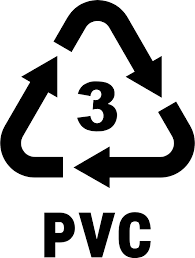 |
No. 3 – may release toxic breakdown products like phthalates into food and drinks. Used on bottles for condiments, window cleaner, detergent, shampoo, cooking oil, teething rings, toy, shower curtains, clear food packaging, electrical wire insulation, medical equipment and plumbing pipes. |
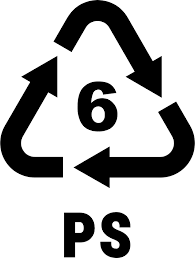 |
No. 6 – used in polystyrene or Styrofoam and found in disposable plates and cups, meat trays, egg cartons, take away containers and compact disc cases. Styrofoam cups, when heated, release potentially toxic or carcinogenic styrene into the coffee or tea. These plastics are also notoriously difficult to recycle. |
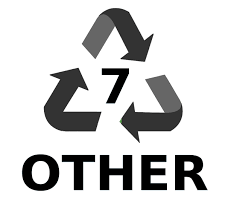 |
No. 7 – incorporates miscellaneous plastics that do not fit into other categories: some are safe, some may be suspect. Includes those used in baby bottles, large water bottles, sunglasses, DVDs, phone and computer cases, signs and displays, certain food containers and nylon. These plastics are made up of various resins. Some (e.g. polycarbonate) contain Bisphenol A (BPA) |
Plastics with no known health effects:
 |
High density polyethylene. Milk, juice, drink bottles, ice cream containers, bins, outdoor furniture |
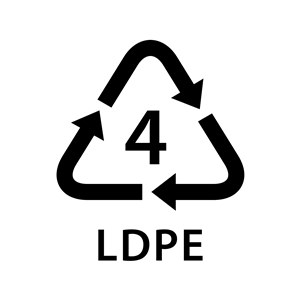 |
Low density polyethylene. Bins, tubs, tubing, cling-wrap |
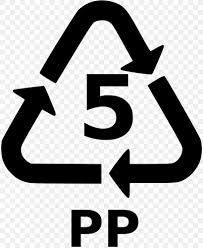 |
Polypropylene. Microware ovenware, food containers (including take-aways), crates, plant pots, car parts. |
Personal Care Products
Personal care products and cosmetics are another potential source of chemicals that may or may not be ideal during detox. As many ingredients are absorbed through the skin, it is important to access the products you are using and invest in your health by choosing more natural skincare options. Ideally, avoid using products with the following ingredients which may impact upon your health.
| INGREDIENT | PERSONAL CARE PRODUCTS |
| Aluminium | Anti-perspirant deodorants |
| Benzyl peroxide | Peeling agent found in acne treatment gels, acne face wash, acne face creams and pore cleansing washes |
| Bisphenol-A (BPA) | Hardener in nail polish |
| Mineral oils | Moisturisers, commercial baby oil |
| Phthalates | Used in cosmetics labelled as synthetic fragrance or ‘parfum’ and hairsprays |
| Propylene glycol/Butylene | Moisture carrier used in shampoo, conditioner, after shave, toothpaste, deodorant, and mouthwash |
| Parabens (methyl, ethyl, butyl, propyl) | Inhibit microbial growth and extend the shelf-life of cosmetic products. Found in many moisturisers and cream cleansers. |
| Sodium lauryl sulphate/ sodium laureth sulphate/ | Lathering/foaming agent found in many personal care products including shampoo, conditioner and body washes |
| Toluene and dibutyl | Nail polish and nail hardeners |
| Triclosan | Antibacterial agents found in cleansers, toothpastes and anti-perspirants |
How do our Bodies Detox?
Our bodies go through detoxification on a regular, somewhat continual basis. There are four main organs involved in the detoxification process:
- The liver – The liver is a major detoxification organ and is responsible for many chemical reactions to aid toxin removal. It filters the blood to remove toxins, makes and secretes bile to remove cholesterol and fat-soluble toxins, and it breaks down unwanted chemicals. Examples of toxins that the liver excretes include:
- Bacteria
- Unwanted by-products of immune function
- Excess cholesterol
- Many prescription and over-the-counter drugs
- Caffeine,
- Histamine
- Hormones
- Benzopyrene (carcinogen from charred meats)
- Analine (yellow food dyes)
- Insecticides
- Nicotine
- The Kidneys – toxins are excreted through urine. Once toxins are made water-soluble by the liver, they are transported to the kidneys.
- Skin – toxins are excreted through sweat. Types of toxins excreted include DDT and heavy metals such as lead and mercury.
- The Intestines – Fat soluble toxins and toxins from the bowel bacteria are release though the faeces.
It is important for us to support our bodies to make sure that we are able to detoxify effectively and sometimes that means that we need to do a detox program. AMC has three detox programs available:
Book an appointment with one of our nutritionists or naturopaths to see if one of our detox programs is right for you.